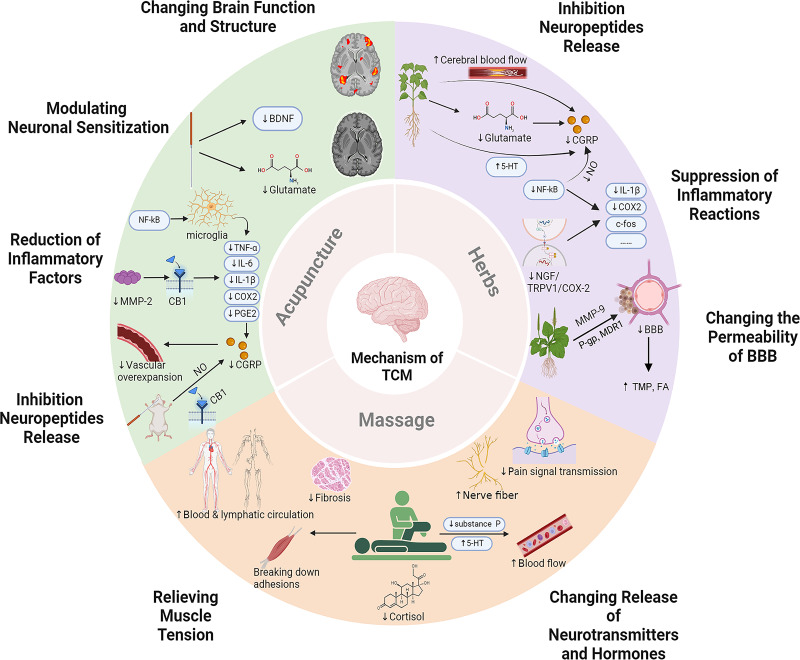Figure 1.
The mechanisms of acupuncture, herbs, and massage in the treatment of migraine.
(1) Acupuncture inhibits CGRP by reducing NO release, activating CB1 receptors, and lowering levels of inflammatory factors. Acupuncture can reduce BDNF and Glutamate levels, change the interaction between the limbic regions and the autonomic nervous system, and improve the GMV of the cuneus. (2) Herbs can inhibit CGRP by increasing cerebral blood flow, promoting glutamate metabolism, and increasing 5-HT level. Herbs can also inhibit neuroinflammation and inflammatory signaling pathways, thereby reducing the expression of inflammatory factors. Herbs can reduce the permeability of the BBB by regulating MMP-9 and its competitive or non-competitive binding with metabolic enzymes. (3) Massage can inhibit the pain signal transmission of the nerve fiber, reduce substance P, increase 5-HT contents, improve local blood flow, accelerate the metabolism of pain-causing substances, reduce cortisol levels, and relieve muscle tension. Created with BioRender.com.
Abbreviations: BBB, Blood-brain barrier; BDNF, Brain-derived neurotrophic factor; CB1, Type 1 cannabinoid; CGRP, Calcitonin gene-related peptide; COX2, Cyclooxygenase-2; FA, Ferulic acid; IL-1β, Interleukin-1β; MDR1, Multidrug resistance protein 1; MMP-2, Matrix metalloproteinase-2; MMP-9, Matrix metalloproteinase-9; NF-κB, Nuclear factor-kappa B; NGF, Nerve growth factor; NO, Nitric oxide; PGE2, Prostaglandin E2; P-gp, P–glycoprotein; TCM, Traditional Chinese Medicine; TMP, Tetramethylpyrazine; TNF-α, Tumor necrosis factor-α; TRPV1, Transient receptor potential vanilloid 1; 5-HT, 5-hydroxytryptamine.

